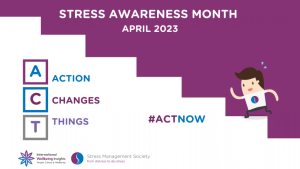Managing Pandemic Stress
According to the World Health Organization, the COVID-19 pandemic triggered a 25% increase in the prevalence of anxiety and depression worldwide.
One major explanation for the increase was the unprecedented stress caused by the social isolation resulting from the pandemic. Linked to this were constraints on people’s ability to work, seek support from loved ones and engage in their communities.
Loneliness, fear of infection, suffering and death, grief after bereavement and financial worries have also been cited as stressors leading to anxiety and depression.
Workplace Stress and Productivity
Workplace stressors are classified as physical and psychosocial. Physical stressors include noise, poor lighting, poor office or work layout, and ergonomic factors, such as bad working postures.
Psychosocial stressors are, arguably, the most predominant stress factors. These include high job demands, inflexible working hours, poor job control, poor work design and structure, bullying, harassments, and job insecurity. Workplace stress not only affects the worker, but it can also have adverse effects on company performance as a result of reduced productivity.
The effects of job-related strain are evident in workers’ physical health, mental health, and their behaviour. These effects occur in a continuum, beginning as distress in response to stressors. Distress, in turn, leads to elevated blood pressure and anxiety, which increase the risk of coronary heart disease, substance abuse, and anxiety disorders.
The impact of stress on cardiovascular disease has been well established: Studies have shown that workplace stress is a strong risk factor for preludes to cardiovascular disease (obesity, high blood cholesterol, high blood pressure) and of adverse cardiovascular events, such as heart attack and stroke.

The Importance of Ongoing Stress Monitoring
Once you understand how you react to stress, you can identify when your stress levels are heightened. When feelings of anxiety creep up, you can take steps to help control the stress before it becomes overwhelming.
If you’re in the middle of an intense activity, such as finalizing an important project for work, take a moment to step away from it. Taking a walk or the time to stand up and stretch may help reset your mind and body.
In addition to taking breaks or using medication, you can also adopt some lifestyle changes to help minimize stress. Some examples include getting at least seven hours of sleep a night, engaging in at least 150 minutes of moderate exercise each week, meditation, or eating a balanced diet.
Although it’s close to impossible to eliminate stress entirely, you can take steps to monitor and feel more in control of your response to situations and know when it’s time to de-stress and take a break.
Using ECG to Monitor Stress
Electrocardiogram (ECG) sensors on smart devices and chest straps have revolutionized stress monitoring by offering precise, real-time insights into an individual’s stress levels. These sophisticated sensors can detect subtle changes in the user’s heart, providing a reliable indicator of stress. By monitoring ECG, users receive early warnings to understand their body’s true state and take appropriate actions.
B-Secur’s gold standard HeartKey® biosensing technology sets the benchmark in the field of ECG-based stress monitoring.
This advanced algorithm delivers accurate stress score measurements, enabling manufacturers to integrate it seamlessly into their devices and offer personalized insights. HeartKey’s non-invasive and continuous monitoring capabilities, combined with its ease of integration, make it an ideal solution for everyday devices.
By utilizing ECG technology and incorporating B-Secur’s HeartKey® biosensing, users can better understand and manage their stress, ultimately leading to a healthier and more balanced lifestyle.
For more information on HeartKey, visit https://www.b-secur.com/solutions/heartkey/
